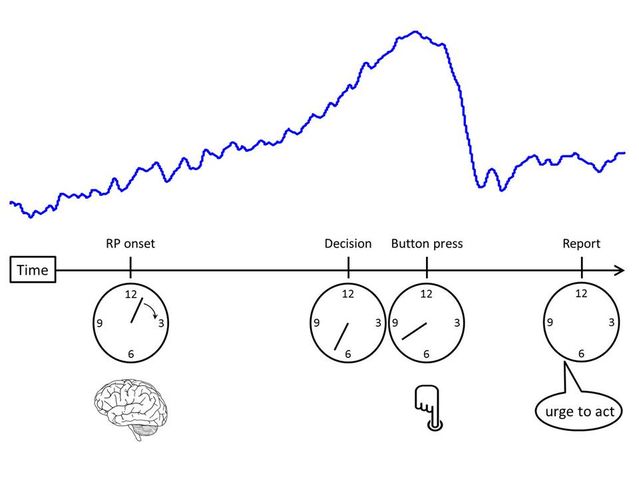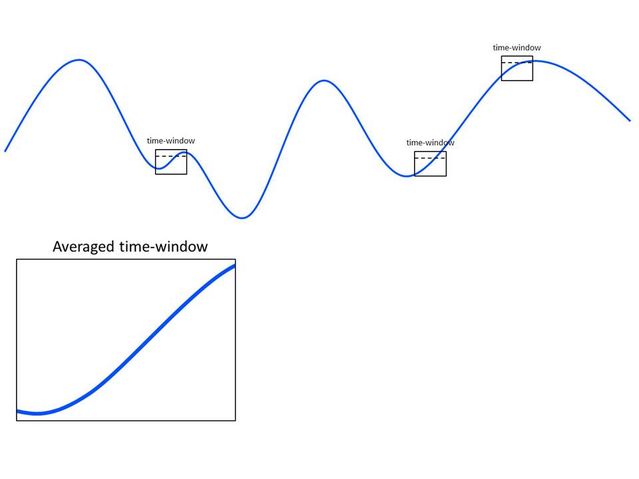Free Will
The timing of free will
What ice cream and the sun have to do with decision-making
Posted February 18, 2017
Scientists and laypeople are bewitched in their thinking about free will since the 1983 article by Benjamin Libet and coauthors was published in the journal Brain. What did those neuroscientist show with a fairly simple EEG experiment where brain activity was recorded while subjects performed finger movements? In Figure 1 you see a typical EEG curve (recorded brain activity) in relation to the timing characteristics of the finger movement. Subjects watched a revolving clock so that they were able indicate at which time they felt that they wanted to move their finger. That is the “Decision” time in Fig. 1 which is reported after the movement has been executed (“Report” time in Fig. 1).

What one can easily see is that before subjects became aware of their “urge” to act (“Decision” time) there is already brain activity visible. The simple interpretation for many scientists thereafter was: brain activity (RP; for readiness potential) precedes voluntary decisions. The brain acts before we become conscious of our intention. Our free will in choosing the time of finger movement is an illusion. Our voluntary decision has no causal influence on the movement, which is completely determined by underlying brain activity.
But is that true? Recent evidence from researchers of Stefan Schmidt’s lab at the University of Freiburg in Germany has led to a very different interpretation. Instrumental in the discoveries was Han-Gue Jo who conducted his Ph.D. thesis with a series of experiments using the Libet task. Now, what was found and published in the journal Experimental Brain Research in 2013? If you look at the brain waves over time from which the readiness potential is extracted, you see a continuous up and down of the brain wave (the potential is alternating between positivity and negativity: Fig. 2). Often, when the brain wave goes up (it is in a negative state), an individual feels that he or she wants to press the button. Actually in in 70% of the cases when a subject pressed the button that brain activity was in the up-mode. However, in 30% of the cases when people pressed the button brain activity was in the down-mode (the slopes in Fig. 2 going downwards).

What does that mean? On average we get the negative (up-going) readiness potential because finger presses happen during 70% of the cases when the EEG signal is in a negative state. But this then means that behavior is obviously not determined by the negative slope, because in 30% of the cases people press the button when there is a positive slope. We cannot talk about determinism but of a probabilistic relation between the readiness potential and the finger movement.
The readiness potential was discovered in the 1960ies in Freiburg by Hans Helmut Kornhuber and Lüder Deecke who coined the term 'readiness potential'. And that’s what it actually is: the readiness potential makes us more ready to press the button but it does not determine our behavior. In fact, in a further study with a Buddhist monk, an experienced meditator who could more sensitively feel his inner movements, was instructed by Stefan Schmidt’s team to withhold the urge to press the button. Then, the readiness potential stretched as long as the meditator withheld the movement. With other words: one could even say that the monk was able to control his brain activity.
What has this to do with ice cream and the sun, as the title of this blog suggests? That’s an analogy which Stefan Schmidt told me when we discussed the results. Take the brain wave of Fig. 2 as a temperature curve. When the temperature goes up and we have sun shine, people are more ready to eat ice cream. Say, 70% of ice cream consumption happens during high temperatures. But also in 30% of all cases people eat ice cream when temperatures are low and the sun hides behind clouds. In the real world scenario it is obvious that the sun and the temperature do not determine when we eat ice cream. We eat ice cream also when it is cold. Sometimes when it is really hot we don’t eat ice cream. The rising temperature makes us more likely, more ready to buy ice cream, but it does not determine our behavior.
References
Kornhuber, H.H., & Deeke, L. (1965). Cerebral potential changes in voluntary and passive movements in man: Readiness potential and reafferent. Archiv für die Gesamte Physiologie 284, 1–17.
Libet, B., Gleason, C.A., Wright, E.W., & Pearl, D.K. (1983). Time of conscious intention to act in relation to onset of cerebral activity (readiness-potential). Brain 106, 623–642.
Jo, H.-G., Hinterberger, T., Wittmann, M., Borghardt, T.L., Schmidt, S. (2013). Spontaneous EEG fluctuations determine the readiness potential: Is preconscious brain activation a preparation process to move? Experimental Brain Research 231, 495–500.
Jo, H.-G., Wittmann, M., Borghardt, T.L., Hinterberger, T., Schmidt, S. (2014). First-person approaches in neuroscience of consciousness: brain dynamics correlate with the intention to act. Consciousness and Cognition 26, 105–116.


